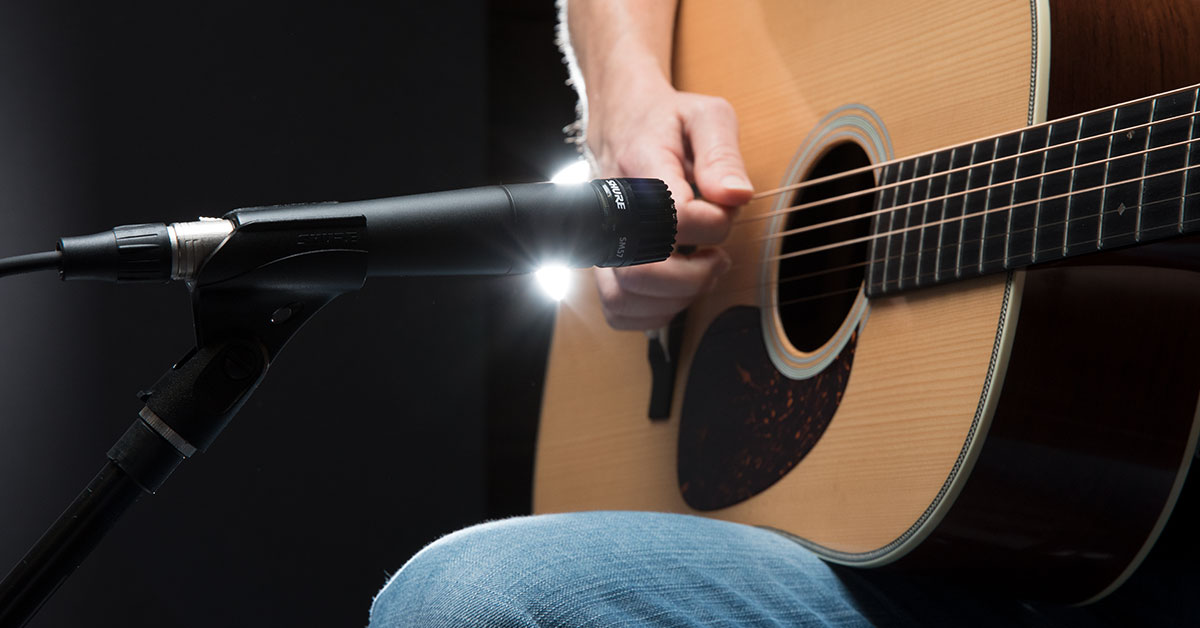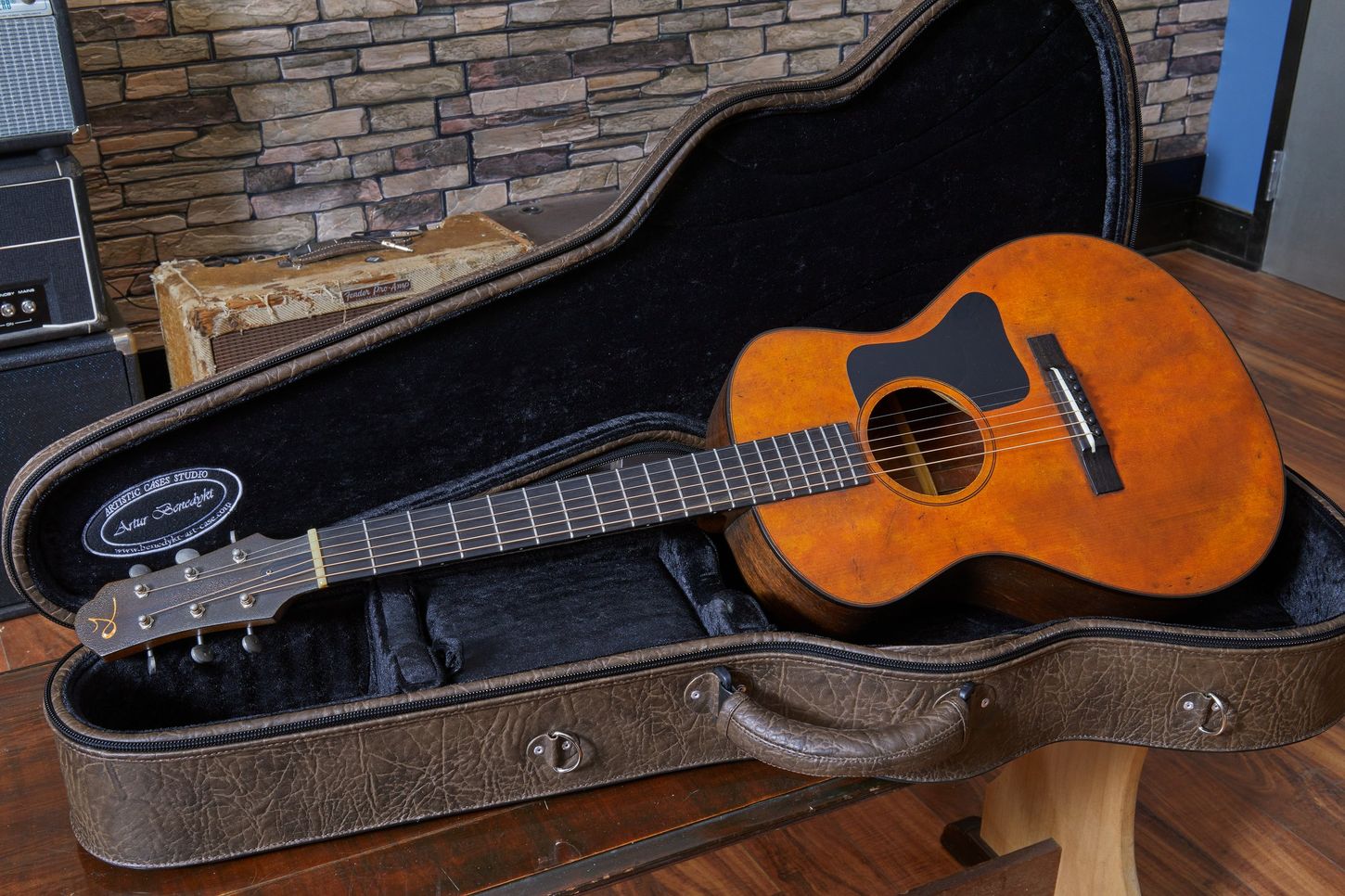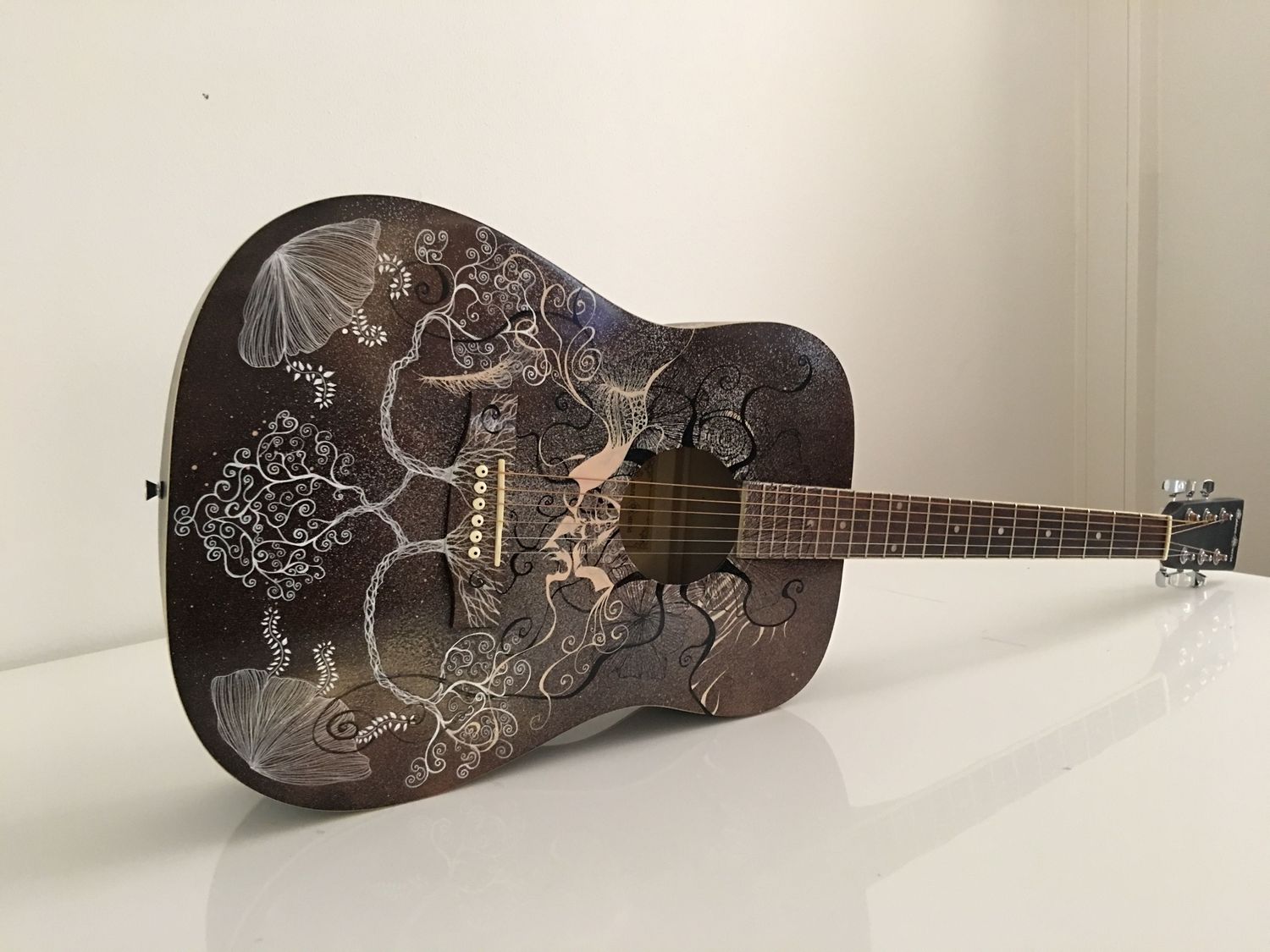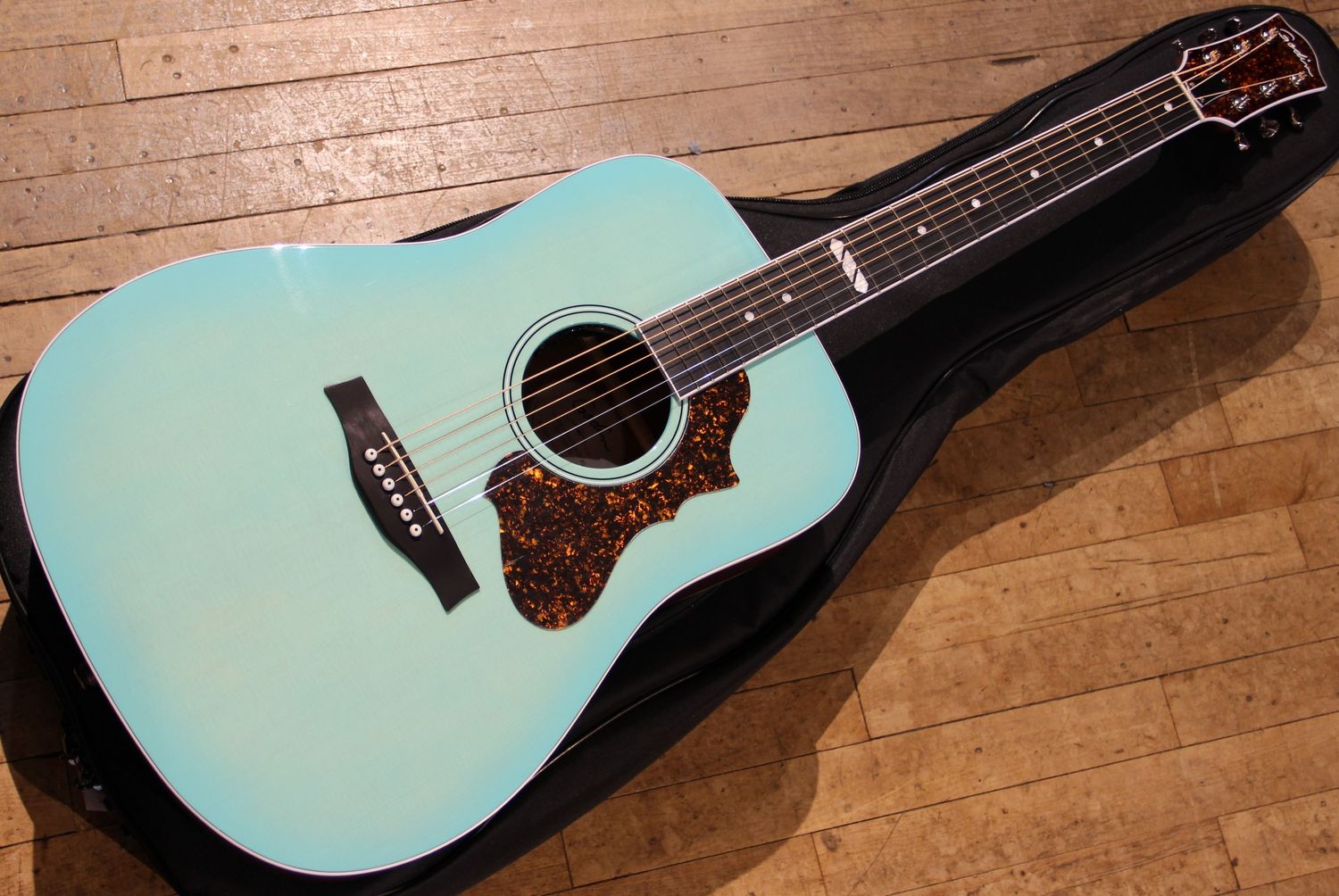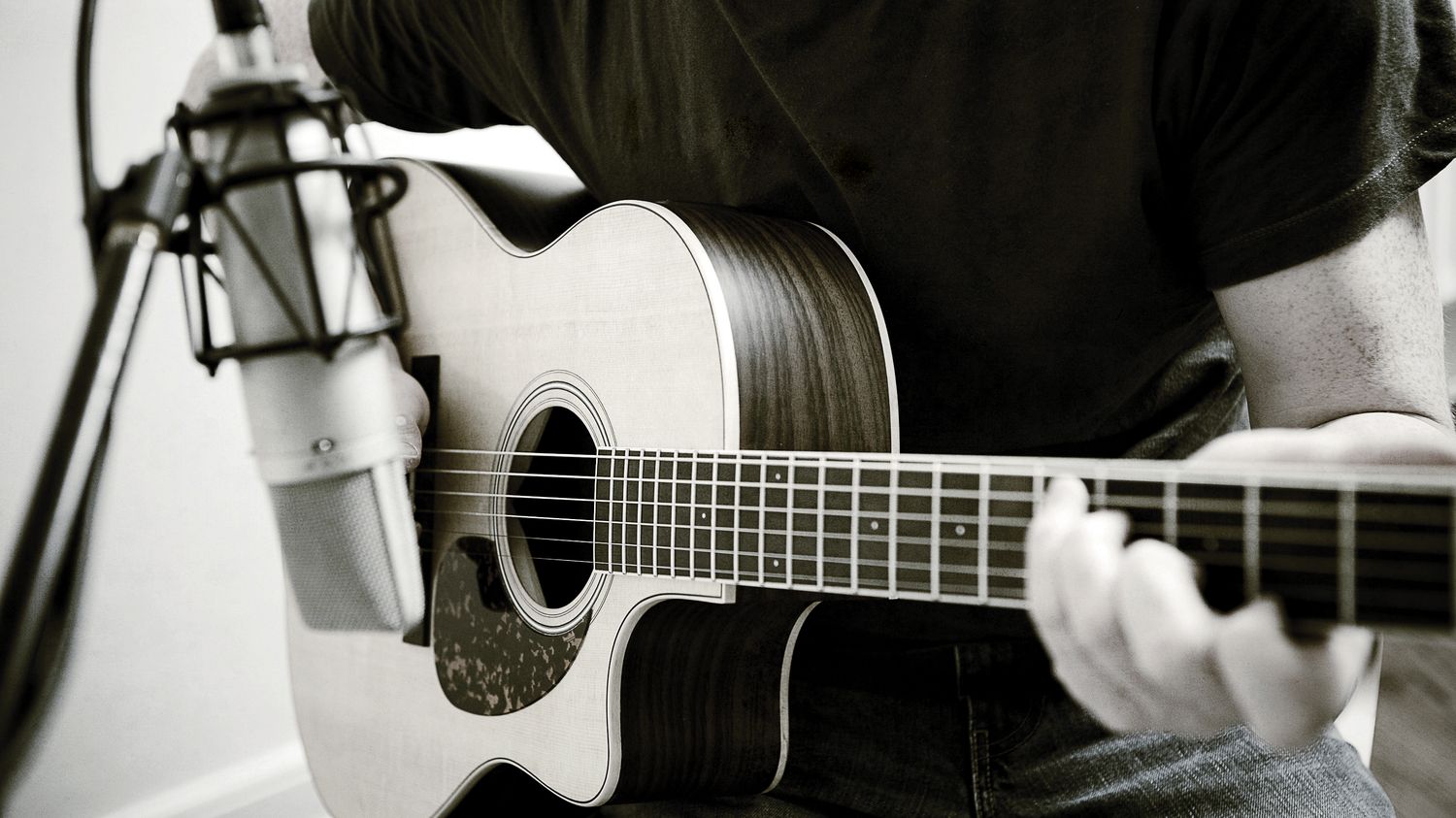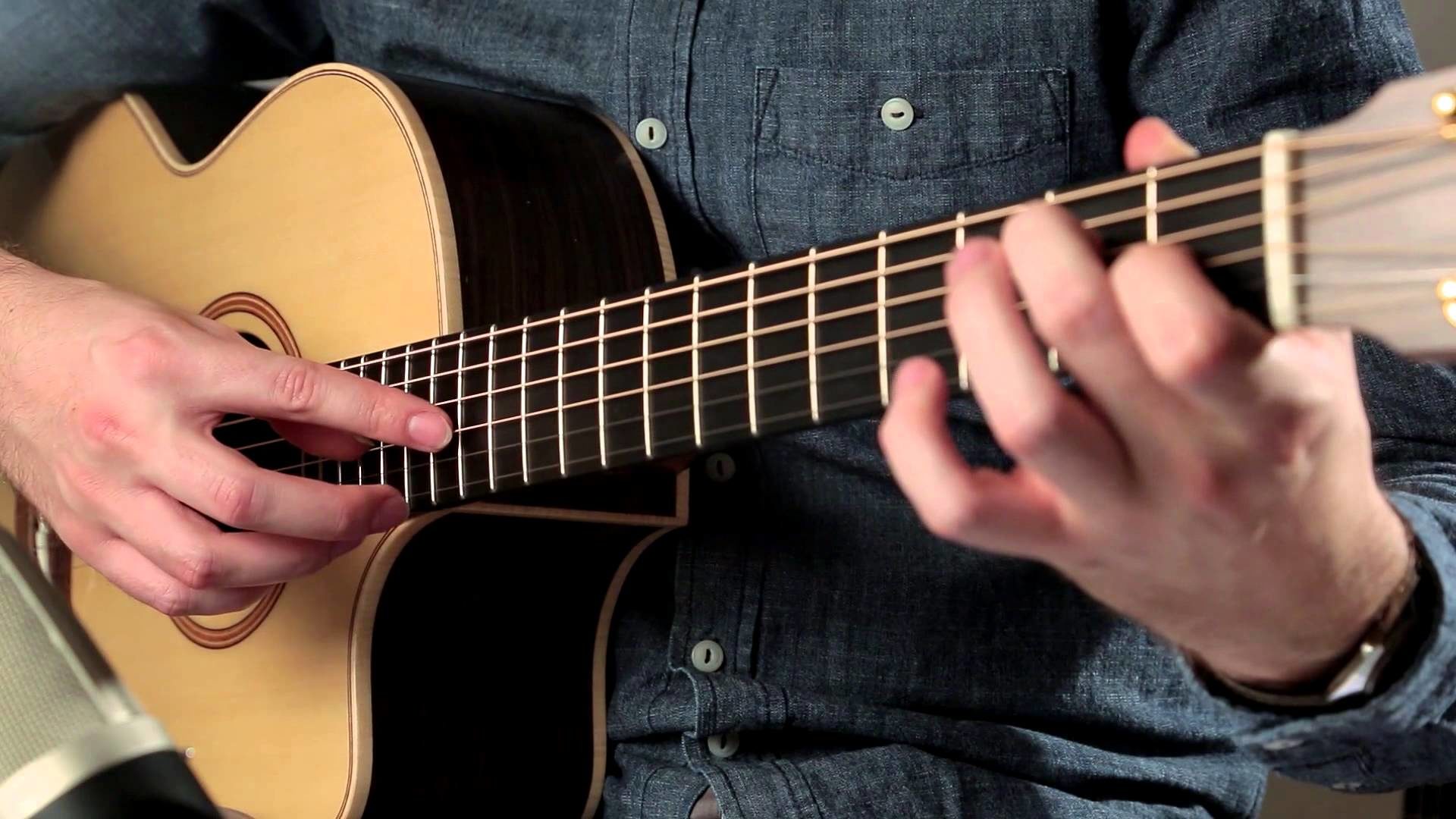Home>Production & Technology>Acoustic>How To Measure Neck Relief On Acoustic Guitar


Acoustic
How To Measure Neck Relief On Acoustic Guitar
Published: March 13, 2024
Learn how to measure neck relief on your acoustic guitar to ensure optimal playability and sound quality. Follow these steps to maintain your acoustic guitar's performance.
(Many of the links in this article redirect to a specific reviewed product. Your purchase of these products through affiliate links helps to generate commission for AudioLover.com, at no extra cost. Learn more)
Table of Contents
Introduction
When it comes to playing the acoustic guitar, achieving the perfect balance of playability and sound quality is essential. One crucial factor that significantly impacts the playability and overall performance of an acoustic guitar is the neck relief. Understanding and measuring neck relief is a fundamental skill for any guitarist, as it directly affects the playability, intonation, and overall feel of the instrument.
The neck relief of a guitar refers to the slight curvature of the neck, which influences the distance between the strings and the fretboard. This curvature is essential for allowing the strings to vibrate freely without buzzing against the frets. Proper neck relief ensures that the strings have enough clearance to resonate effectively, producing clear and harmonious tones.
Measuring neck relief is a critical aspect of guitar maintenance and setup, as it directly impacts the instrument's playability and tonal quality. By understanding how to measure and adjust neck relief, guitarists can ensure that their instruments perform optimally, allowing for comfortable playing and accurate intonation.
In this comprehensive guide, we will delve into the intricacies of neck relief, exploring its significance and providing a step-by-step approach to measuring and adjusting it. Additionally, we will discuss the essential tools required for this process, empowering guitarists to confidently maintain and optimize the neck relief of their acoustic guitars. Whether you are a seasoned guitarist or a novice player, mastering the art of measuring neck relief is a valuable skill that can elevate your playing experience and the overall performance of your acoustic guitar.
What is Neck Relief?
Neck relief, also known as the "truss rod adjustment," refers to the slight curvature of the guitar neck, which influences the distance between the strings and the fretboard. This curvature is essential for allowing the strings to vibrate freely without buzzing against the frets. When a guitar's neck is perfectly adjusted, it exhibits a subtle concave shape, ensuring that the strings have adequate clearance to resonate effectively, producing clear and harmonious tones.
The ideal amount of neck relief is crucial for achieving optimal playability and sound quality. If the neck relief is excessive, meaning the neck is too concave, the strings may be too far from the frets, resulting in high action and making it challenging to press the strings down. On the other hand, insufficient neck relief, where the neck is too straight or even slightly convex, can cause the strings to buzz against the frets, leading to poor intonation and a lack of sustain.
Understanding and maintaining the correct amount of neck relief is vital for ensuring that the guitar plays comfortably and produces a balanced, resonant tone. It is important to note that the amount of neck relief required can vary depending on factors such as string gauge, playing style, and environmental conditions. Therefore, being able to measure and adjust neck relief is a valuable skill for guitarists seeking to optimize the playability and tonal characteristics of their instruments.
In summary, neck relief is a critical aspect of guitar setup and maintenance, directly impacting the playability, intonation, and overall performance of an acoustic guitar. By comprehending the significance of neck relief and its influence on the instrument's playability and tonal quality, guitarists can effectively maintain and optimize this essential element of their guitars, ensuring an enjoyable playing experience and consistent tonal excellence.
Why is Neck Relief Important?
Neck relief plays a pivotal role in the overall playability and tonal quality of an acoustic guitar. Maintaining the correct amount of neck relief is crucial for several reasons:
-
Playability: Proper neck relief ensures that the strings are at an optimal distance from the frets, allowing for comfortable fretting and smooth string bending. When the neck relief is appropriately set, the guitar becomes more responsive to the player's touch, facilitating effortless chord transitions and intricate fingerstyle techniques.
-
Intonation: The curvature of the neck directly impacts the guitar's intonation, which refers to the instrument's ability to play in tune across the entire fretboard. Correct neck relief contributes to accurate intonation by preventing the strings from buzzing against the frets, thereby maintaining consistent pitch and harmonic resonance.
-
String Action: The amount of neck relief influences the string action, which refers to the height of the strings above the frets. Proper neck relief ensures a balanced string action, preventing the strings from being too high or too low, thereby optimizing the guitar's playability and responsiveness.
-
Tonal Quality: Neck relief significantly affects the tonal characteristics of an acoustic guitar. When the neck relief is correctly adjusted, the strings can vibrate freely, producing clear, resonant tones with ample sustain. Conversely, incorrect neck relief can lead to muted or buzzy notes, compromising the overall tonal quality of the instrument.
-
Environmental Adaptability: Changes in temperature and humidity can impact the neck relief of a guitar. Understanding how to measure and adjust neck relief allows guitarists to adapt to environmental variations, ensuring that the instrument maintains optimal playability and tonal integrity in diverse conditions.
In essence, neck relief is vital for achieving a harmonious balance between playability and tonal excellence. By maintaining the correct amount of neck relief, guitarists can optimize their instruments for a wide range of playing styles and musical genres, ensuring a rewarding and expressive playing experience.
Tools Needed for Measuring Neck Relief
Accurately measuring neck relief requires the use of specific tools designed to provide precise and reliable measurements. These tools are essential for ensuring that the neck relief is within the optimal range, allowing for comfortable playability and consistent tonal quality. Here are the essential tools needed for measuring neck relief:
-
Capo: A capo is used to fret the strings at a specific position on the neck, typically at the first fret, effectively creating a temporary nut. This allows for easier measurement of the gap between the strings and the frets in the middle of the neck.
-
Feeler Gauges: Feeler gauges are thin, flexible tools with calibrated measurements, used to determine the gap between the strings and the frets. These gauges come in various thicknesses, allowing for precise measurements of the neck relief.
-
Straightedge: A straightedge, often a specialized guitar straightedge or a long, straight tool, is used to assess the curvature of the neck. Placing the straightedge along the frets helps determine the amount of relief present in the neck, aiding in the adjustment process.
-
Guitar Tuner: A guitar tuner is essential for ensuring that the instrument is properly tuned before and after adjusting the neck relief. Accurate tuning is crucial for assessing the impact of the adjustments on the guitar's playability and tonal characteristics.
-
Truss Rod Wrench: For guitars equipped with an adjustable truss rod, a truss rod wrench is necessary for making precise adjustments to the neck relief. It is important to use the correct size of truss rod wrench specified by the guitar manufacturer to avoid damaging the truss rod.
-
Measuring Tape or Ruler: A measuring tape or ruler is useful for verifying the relief measurements and ensuring consistency across different areas of the neck. This tool aids in maintaining uniform neck relief, contributing to balanced playability and tonal quality.
By utilizing these essential tools, guitarists can accurately measure the neck relief of their acoustic guitars, facilitating informed adjustments to optimize playability and tonal characteristics. These tools empower guitarists to maintain their instruments at peak performance, ensuring a rewarding and enjoyable playing experience.
Step-by-Step Guide to Measuring Neck Relief
Measuring the neck relief of an acoustic guitar is a precise process that requires attention to detail and the use of specific tools. By following a systematic approach, guitarists can accurately assess the curvature of the neck and make informed adjustments to optimize playability and tonal quality. Here is a comprehensive step-by-step guide to measuring neck relief:
-
Prepare the Guitar: Begin by ensuring that the guitar is properly tuned to its standard pitch. This step is crucial for obtaining accurate measurements and assessing the impact of the adjustments on the instrument's playability and tonal characteristics.
-
Fret the First String: Place a capo on the first fret of the guitar, effectively creating a temporary nut. This allows for easier access to the middle of the neck, where the neck relief will be measured.
-
Assess the Gap: Using a feeler gauge, carefully measure the gap between the bottom of the sixth string and the top of the seventh fret. The ideal gap should fall within a specific range, typically between 0.010 to 0.014 inches, depending on the guitar's setup and the player's preferences.
-
Check Multiple Points: Repeat the measurement process for the remaining strings, assessing the gap between each string and the seventh fret. This ensures that the neck relief is consistent across the entire fretboard, promoting uniform playability and tonal characteristics.
-
Use a Straightedge: Place a straightedge along the length of the fretboard, spanning several frets. This allows for a visual assessment of the neck's curvature, aiding in determining the overall relief present in the neck.
-
Verify the Measurements: Use a measuring tape or ruler to verify the relief measurements and ensure that the gap between the strings and the frets aligns with the recommended specifications. Consistency in the measurements is essential for achieving balanced playability and tonal quality.
By following these step-by-step instructions, guitarists can accurately measure the neck relief of their acoustic guitars, empowering them to make informed adjustments to optimize playability and tonal characteristics. This systematic approach ensures that the instrument maintains the ideal amount of neck relief, contributing to a rewarding and expressive playing experience.
Adjusting Neck Relief
After measuring the neck relief of an acoustic guitar, it may be necessary to make adjustments to ensure that the instrument maintains the optimal amount of relief for balanced playability and tonal quality. The process of adjusting neck relief involves making precise alterations to the curvature of the neck, typically achieved through the truss rod, to achieve the desired amount of relief. Here is a detailed guide to adjusting neck relief:
-
Assess the Current Relief: Before proceeding with any adjustments, it is essential to evaluate the current neck relief and determine whether it falls within the recommended range. This assessment provides a baseline for understanding the required adjustments and ensures that the instrument's playability and tonal characteristics are taken into account.
-
Understand the Truss Rod: For guitars equipped with an adjustable truss rod, it is crucial to understand the truss rod's function and the direction in which adjustments affect the neck relief. Most truss rods can be turned clockwise to decrease the relief (straightening the neck) or counterclockwise to increase the relief (adding curvature to the neck).
-
Make Incremental Adjustments: When adjusting the truss rod, it is advisable to make small, incremental changes to the relief rather than large, drastic adjustments. This approach allows for careful fine-tuning and minimizes the risk of over-adjusting the neck, which could lead to undesirable playability issues.
-
Use the Correct Tool: Utilize the appropriate truss rod wrench, ensuring that it fits the truss rod's adjustment nut securely. Using the correct tool minimizes the risk of damaging the truss rod and enables precise control over the adjustments.
-
Monitor the Impact: After making each adjustment to the truss rod, it is essential to monitor the impact on the neck relief and the instrument's playability. This involves re-measuring the relief and assessing how the adjustments influence the string action, intonation, and overall feel of the guitar.
-
Recheck and Fine-Tune: Once the desired amount of relief is achieved, recheck the measurements across the fretboard to ensure uniformity. Fine-tune the adjustments as needed, aiming for consistent relief that promotes balanced playability and tonal characteristics across all strings and frets.
-
Consider Professional Assistance: If uncertain about making truss rod adjustments, or if the guitar exhibits complex relief issues, seeking professional assistance from a qualified guitar technician is advisable. Professional luthiers possess the expertise and tools to address intricate neck relief adjustments effectively.
By following these guidelines, guitarists can confidently adjust the neck relief of their acoustic guitars, ensuring that the instrument maintains the optimal balance of playability and tonal quality. Careful attention to the adjustment process and a systematic approach contribute to a rewarding playing experience and consistent tonal excellence.
Conclusion
In conclusion, mastering the art of measuring and adjusting neck relief is a fundamental skill for any guitarist seeking to optimize the playability and tonal characteristics of their acoustic guitar. The significance of neck relief cannot be overstated, as it directly influences the instrument's responsiveness, intonation, and overall tonal quality. By understanding the essential tools required for measuring neck relief and following a systematic approach, guitarists can ensure that their instruments maintain the optimal amount of relief, promoting a rewarding and expressive playing experience.
The process of measuring neck relief provides valuable insights into the curvature of the neck and the gap between the strings and the frets, allowing guitarists to assess the instrument's playability and tonal characteristics. By utilizing tools such as feeler gauges, straightedges, and truss rod wrenches, guitarists can accurately measure the neck relief and make informed adjustments to achieve the desired playability and tonal balance.
Furthermore, the ability to adjust neck relief empowers guitarists to fine-tune their instruments according to their playing style and preferences. Whether aiming for a lower string action for faster fretting or seeking to optimize the tonal resonance across the fretboard, the process of adjusting neck relief enables guitarists to tailor their instruments to their unique musical expression.
It is important to approach the adjustment process with care and precision, making incremental changes to the truss rod and monitoring the impact on the neck relief and playability. By maintaining uniform relief across the fretboard and verifying the measurements, guitarists can ensure that their instruments exhibit consistent playability and tonal excellence.
In instances where complex relief issues arise or if uncertainty exists regarding the adjustment process, seeking professional assistance from a qualified guitar technician is advisable. Professional luthiers possess the expertise and tools to address intricate neck relief adjustments effectively, ensuring that the instrument performs optimally.
Ultimately, the ability to measure and adjust neck relief empowers guitarists to maintain their acoustic guitars at peak performance, promoting a harmonious balance between playability and tonal excellence. By honing this essential skill, guitarists can elevate their playing experience, unlock the full potential of their instruments, and embark on a musical journey filled with expressive creativity and tonal richness.



